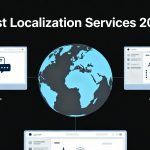Once upon a time, convenience was a competitive advantage. Now it’s a basic expectation. From booking a doctor’s appointment to ordering a meal or renting a car, today’s consumers demand seamless, instant, and hassle-free experiences. In this environment, convenience isn’t just a perk—it’s the new currency. Businesses that fail to deliver it risk being left behind, regardless of how strong their product or brand once was.
The Convenience Economy: How We Got Here
The internet was phase one. Suddenly, information and access exploded. Phase two brought smartphones—putting that access in our pockets. But the real revolution happened when companies realized that time is the one thing customers can’t get back. Saving people time became the ultimate value proposition.
Today, customers expect every brand to match the ease and efficiency of tech giants like Amazon, Apple, or Uber. If you’re slower, clunkier, or more confusing—you’re out. Businesses are no longer just competing with industry peers—they’re competing with the best experience a customer has had, anywhere.
The Four Pillars of Convenience
- Speed
Time is money, and today’s consumer doesn’t have much to spare. Services that deliver faster—whether it’s 30-minute grocery delivery or same-day dry cleaning—win. Customers now expect instant gratification as the norm, not the exception. - Access Anytime, Anywhere
If a customer has to wait until “business hours” to engage with you, they’ll probably go elsewhere. 24/7 accessibility, mobile optimization, and platform-agnostic services are critical. Convenience lives in flexibility. - Simplicity of Use
A confusing app, a broken checkout flow, or too many steps to sign up—these are silent killers. Frictionless UX design, intuitive interfaces, and user-first thinking turn one-time customers into loyal advocates. - Reliability & Predictability
Convenience doesn’t mean cutting corners—it means getting it right the first time. Customers expect not just fast and easy, but flawless. Anything that wastes time—wrong orders, broken processes, delays—undoes all the goodwill.
Industries Where Convenience Is King
Retail
Amazon redefined the playbook. With one-click ordering, same-day shipping, and personalized suggestions, it set a bar that traditional retailers are still scrambling to meet. Brick-and-mortar stores have had to adapt by offering curbside pickup, contactless checkout, and better integration between online and offline channels.
Food & Beverage
The restaurant world has undergone a total shift. Fast-casual chains, food delivery apps, and smart kitchen operations are all optimized for speed and ease. Starbucks mobile ordering lets customers skip the line. Chick-fil-A’s double-lane drive-thru system is an operational marvel. The focus isn’t just food quality—it’s how fast and seamlessly it lands in your hand.
Healthcare
Once known for its long waits and paperwork, healthcare is now evolving toward patient-centric convenience. Telehealth, app-based prescription refills, and virtual check-ins are becoming standard. Patients can now manage appointments, access records, and chat with providers from their phones—turning what used to be a logistical nightmare into a streamlined experience.
Mobility and Travel
In the world of travel and mobility, convenience defines loyalty. Travelers don’t want paperwork, delays, or clunky reservation systems—they want flexibility, speed, and precision. A leading example is Edel & Stark Luxury Car Rental Europe & Dubai. This high-end rental service understands that luxury clients don’t just want a vehicle—they want an effortless experience. Whether you’re landing in Monaco or Dubai, the car you want is delivered precisely when and where you need it. No lines, no waiting, no stress. Just smooth, seamless service.
This is how luxury redefines convenience: by anticipating needs before the customer even asks.
Finance
Banking has transformed more in the last five years than the previous fifty. Challenger banks, mobile apps, and AI-powered advisors allow users to transfer funds, apply for loans, and invest with a few taps. Traditional banks have followed suit, racing to simplify their apps, speed up approval times, and cut the paperwork burden.
Even government-run financial processes are expected to keep pace. Just like customers expect instant transfers and digital onboarding, they also want the New York state tax refund process to be fast, transparent, and trackable.
This rising demand for convenience in every corner of finance pushes both private and public institutions to redesign their systems around user experience.
The Business Case for Prioritizing Convenience
Data backs it all up:
- 76% of customers say convenience is a key factor in brand choice.
- 86% are willing to pay more for a better experience.
- Customer effort is directly tied to loyalty. The more effort someone has to put into a purchase or service, the less likely they are to return.
Convenience:
- Increases conversion rates.
- Builds long-term loyalty.
- Justifies premium pricing.
- Differentiates your business in crowded markets.
What Happens When You Ignore It?
Businesses that cling to legacy systems or outdated models lose customers fast. Frustration leads to drop-off. Even small inefficiencies—like requiring a phone call to cancel a service—can tank your retention rates.
A clunky website? That’s a lost sale.
A hard-to-reach support team? That’s a bad review.
A slow delivery? That’s a canceled order.
In the age of convenience, even minor friction is amplified. The same applies to how brands handle visibility and outreach. Managing media opportunities in-house can be time-consuming and inconsistent. Partnering with a HARO link building agency simplifies this process, helping businesses earn high-authority mentions while staying focused on core operations.
How to Build a Convenience-First Business
Whether you’re a startup or an established brand, building for convenience requires strategy, not just tech. Here’s how to do it right:
- Map the Customer Journey
Identify every point of interaction—where are customers hesitating, confused, or dropping off? Fix those first. - Automate Intelligently
Use automation to handle repetitive tasks like order confirmations, scheduling, reminders, and support queries—freeing humans to handle complex needs. Investing in generative AI development services can take this further by enabling dynamic content creation, smart chat responses, and personalized user journeys at scale. - Prioritize Mobile UX
Your website or app must work flawlessly on mobile. Navigation, loading speed, payment flow—this is where most customers live. If you’re building or improving your mobile app, consider hiring a professional mobile developer to ensure both performance and scalability. A seamless mobile experience often starts with the right talent behind the code. - Offer Real-Time Support
Chatbots, live chat, or even proactive outreach can solve issues fast and increase customer satisfaction dramatically. - Offer Clear, Fast Options
Whether it’s delivery, booking, or customer support, show customers the quickest route to what they want.
Conclusion: Convenience Is the Brand
Convenience isn’t just a feature—it’s your value proposition. In a time-pressed world, brands that remove friction, anticipate needs, and deliver fast will always outperform those that don’t. Whether you’re operating a tech platform, a healthcare service, or a premium car rental company, your success hinges on one question:
How easy are you making life for your customer?
If the answer is “very,” you’re in the lead. If it’s not, someone else will get there first.
Lynn Martelli is an editor at Readability. She received her MFA in Creative Writing from Antioch University and has worked as an editor for over 10 years. Lynn has edited a wide variety of books, including fiction, non-fiction, memoirs, and more. In her free time, Lynn enjoys reading, writing, and spending time with her family and friends.















